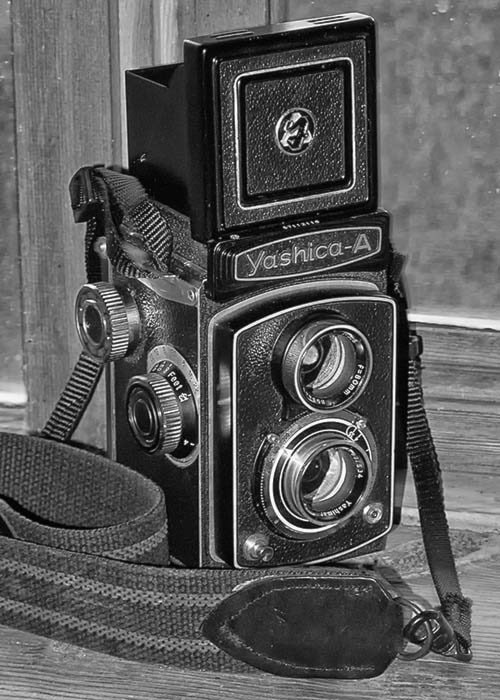At the close of my last article about the Vancouver Camera Swap Meet I wrote that I had purchased a neat 1960s twin lens reflex Yashica camera for myself.
To clarify, the camera is a 120mm format film camera, which gives 2¼x2¼ inch negatives, and does it with twin lenses (or two); a top lens for focusing, and a bottom lens for making the image.
Unlike modern DSLR cameras, photographers don’t hold the camera up to their eye to peer though a tiny hole, and instead view the subject by holding the camera at waist level while focusing on a 2¼” square ground glass.
My wife, Linda, got herself a TLR camera some time ago. Her intention was to force herself to slow down and pay more attention to proper composition, and being limited to only 12-exposure roll film certainly helps one to slow down.
So, when a few weeks before the Vancouver Camera Swap meet she mentioned that she hadn’t had a chance to put a roll of film through her TLR Yashica-Matt since early spring, I decided I might look for the same kind of camera so we could go out together.
I need to say that I am not one of those that thinks film is better than digital. Gosh, not for a minute!
I like digital, and I really like digital post-production software. For that matter I prefer modern digital technology.
However, readers will remember from an earlier article that I wrote, “Happiness is a day with my camera.” To me, that means any camera that is fun to use. And a slow focusing, waist level viewing, twelve-exposure film camera is exactly that, “fun to use”.
Both Linda and I used twin lens cameras in the 1980s. Linda even had a big and heavy Mamiya that she packed on a glacier-climbing trip we once took. When I think of that hefty camera I can’t help but laugh at those modern photographers that complain about how heavy their DSLR cameras are.
We have spent two days since I got my camera going out on photo-excursions. One day driving the back roads near home, and one photographing the small nearby town of Chase. However, the day in Chase was cut short because of rain.
Then, instead of arriving home and being able to quickly edit image files on a big computer screen, the procedure is to take the film into a completely dark room, unroll the film from the paper backing, put it in a light-tight processing tank, and then spend the better part of the next hour pouring chemicals on, rinsing, and hanging the film up to dry overnight. The next day I scan film and edit in Photoshop.
I don’t know if I can say that the processing part of the journey is all that fun. But using the camera is, and I’ll just have to put up with film developing so Linda and I can play with our vintage film cameras.
So far we have been using some really dated film that expired back in 2002. That old film won’t yield the spectacular results one expects from medium format film. We have two more rolls of that fatigued old film to use as we get used to our cameras, then I’ll get some newer film and we will be able to produce photographs that match the resolution of some of the best modern DSLRs.
But sharp pictures aren’t really why so many photographers like Linda and I are returning to those old medium format cameras.
The cameras from the past have now become unusual in this day of instant gratification. And there is something quite rewarding and even fulfilling; and as one photographer remarked “intimate” in the slow process of using a TLR.
These are my thoughts for this week. Contact me at emcam@telus.net. Stop by Enman’s Camera at 423 Tranquille Road in Kamloops. Or call (250) 371-3069.
I sell an interesting selection of used photographic equipment.
